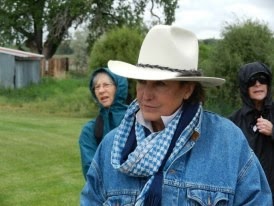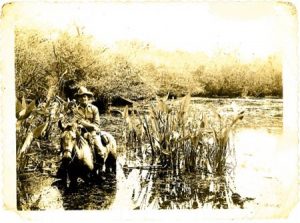

Carrie Balkcom grew up on a cattle ranch in Florida. In 2003 she returned to her roots when she became the executive director of the American Grassfed Association at its founding–and she’s been there ever since. AGA certifies pasture-raised livestock–and not just beef–and they help producers develop and sustain regenerative practices for the sake of the animals, the land, and the consumer.
The photo above is of the kind of cowboys and land where Balkcom comes from. Photo courtesy of the founders of Rain Crow Ranch in Missouri
Photo by Sikes Photos on Unsplash
0’50 what goes into grassfed certification
1’09 no antibiotics, no hormones, no confinement, good animal husbandry, USA only
2’38 peer to peer–standards written by and for producers
3’18 the regenerative ag piece of grassfed certification
4’49 finding the right balance for getting standards right so that they’re achievable and meaningful for consumers
5’48 how certification helps producers market and sell their products
6’21 USDA allows meat to be labeled USA even if it isn’t from the USA
7’11 labeling is crazy, and you have to keep pushing for better policy
7’53 direct sales, which went up during the pandemic
8’55 not expensive to get certification
9’52 changing the industrial food model
10’40 the hazards of CAFOs
12’48 knowledge about nutritional value of pastured vs confined meat is not new but starting to be noticed
13’30 not organic…organic allows for confinement so it’s not as strong a certification
14’18 land health gets better, but the monitoring of this is fairly new for many
15’15 people like supporting rural economies
15’50 consumers are becoming more active and engaged
16’21 what happens to the rising demand when life goes back to “normal”
17’20 large processing plants shut down during covid and a lot of animals were killed and buried but not processed
18’09 small processing plants stepped up when the big meat packers failed
18’56 smaller is better, sometimes
19’35 in favor of seasonality, cooking, knowing where your food is coming from
20’02 recipes on the AGA site
20’49 differences in cooking grassfed meats
21’30 cooking with an instapot
22’06 Colorado has a 22-minute asparagus season
22’45 growth within the grassfed world — they went from 13 producers to 300
24’52 the young farmers are looking for ways to change the marketplace
26’28 a lot more younger farmers than even a few years ago
27’25 pastured animals take longer to raise, which is more costly
27’45 no subsidies for grassfed, so farmers are on their own
28’34 externalities of toxic agriculture
29’33 grassfed is now about 3-5% of total
30’10 would like to grow a few percent per year
30’56 reconnecting with people she grew up with who are also doing grassfed
31’48 making sure life has joy in it
32’23 a producer who has ten animals who gets certification every year to support grassfed
34’05 you can be a member even if you don’t grow animals
34’34 americangrassfed.org
34’54 goals in terms of federal policy
35’09 different policy for different size farmers and ranchers
35’28 seeing movement at USDA and in processing
35’57 this is a truly bipartisan set of issues



Subscribe:
Apple Podcasts
Spotify